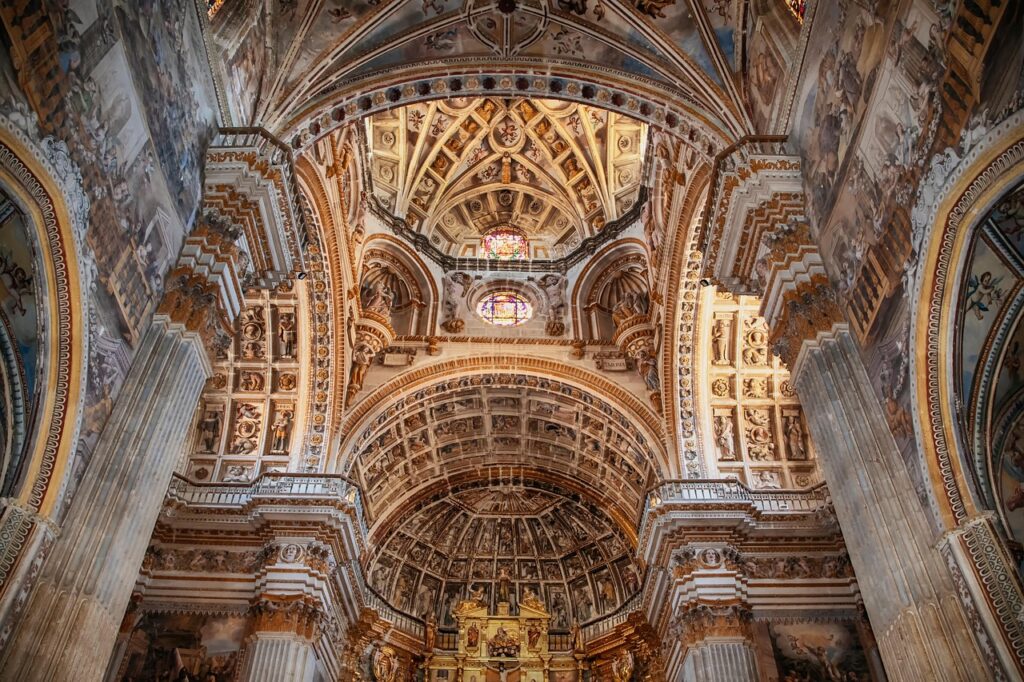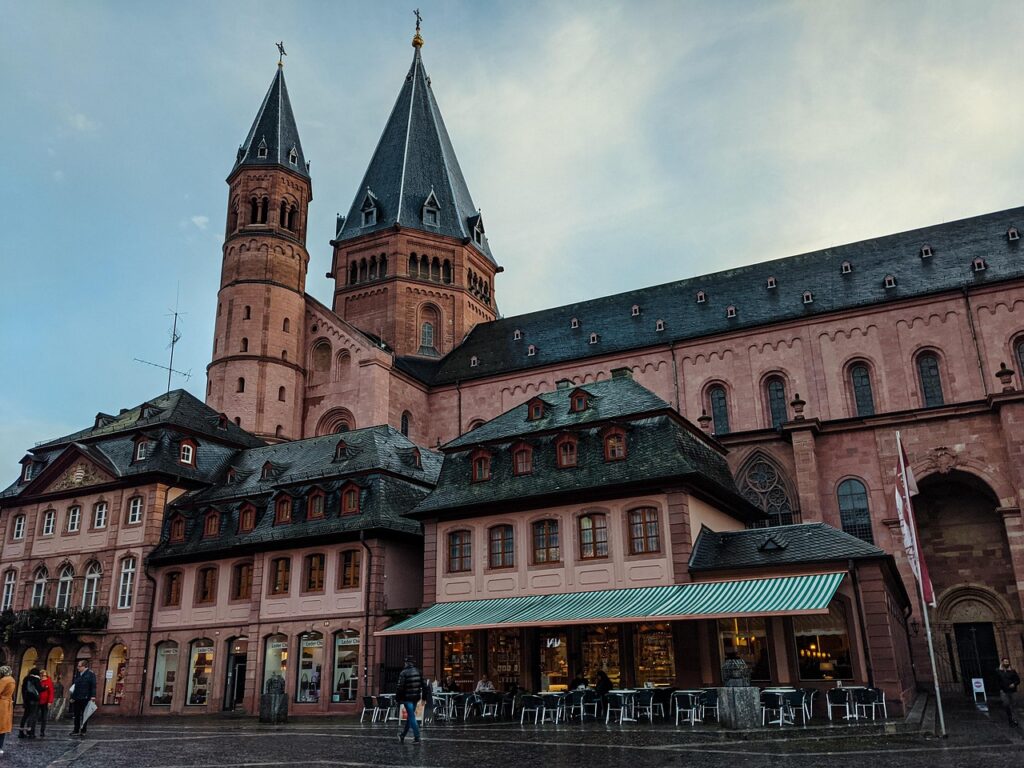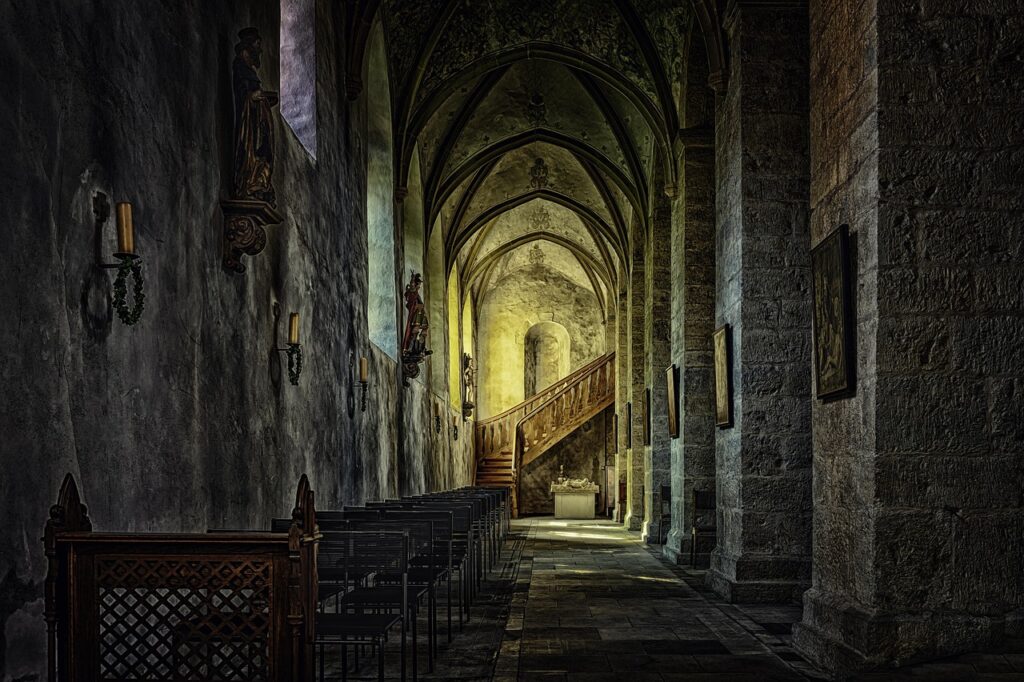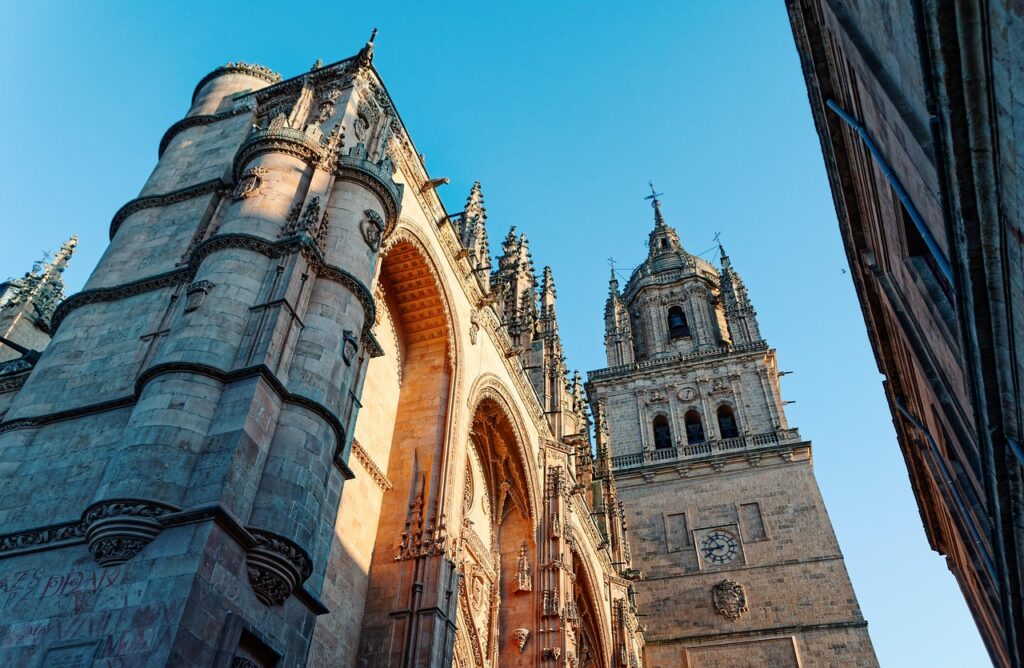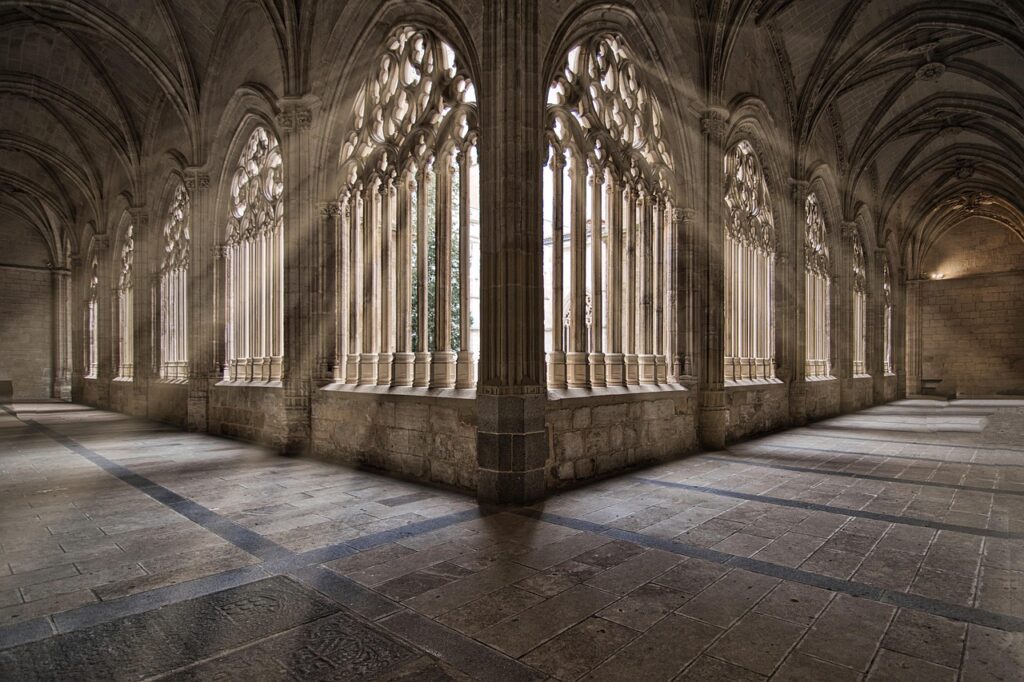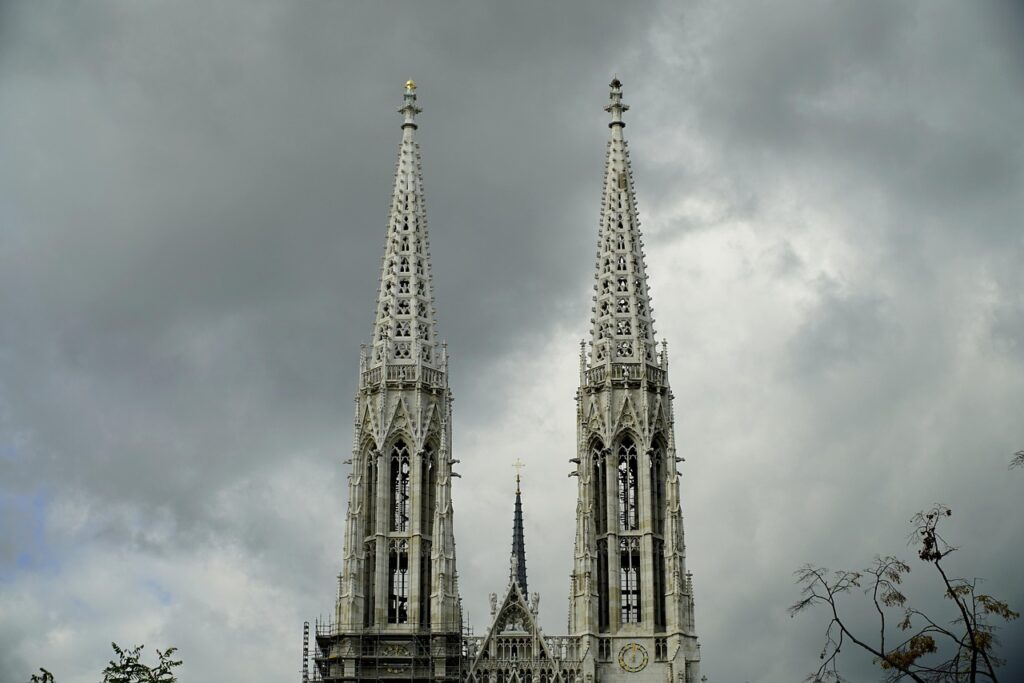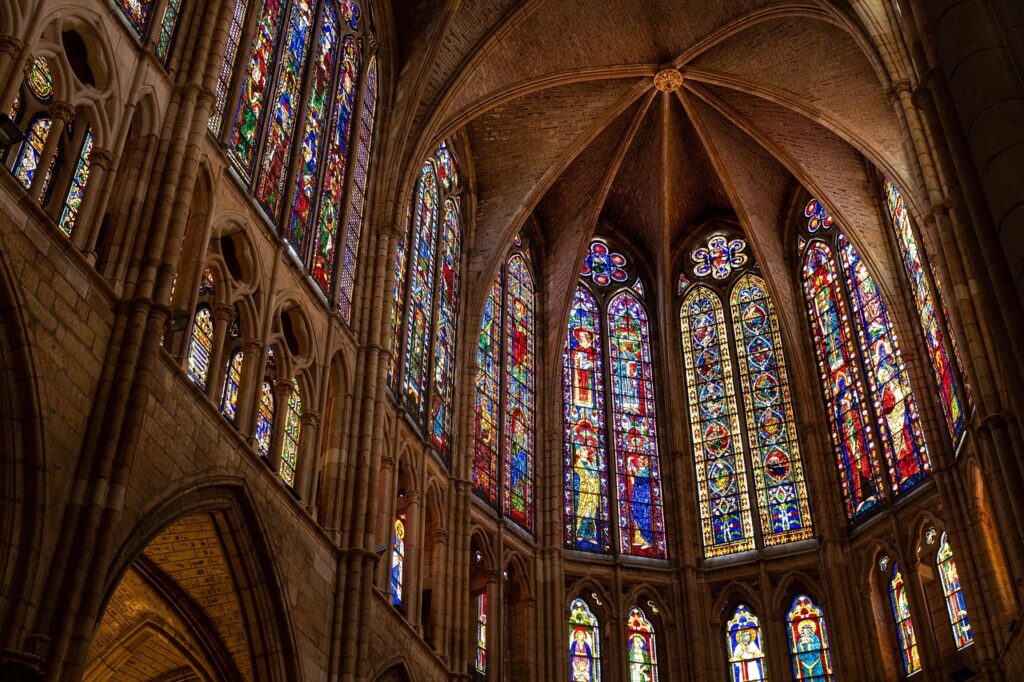
Ever rummaged through an old attic or stumbled upon a forgotten box, only to discover treasures that completely rewrite the story you thought you knew? Well, buckle up, history buffs and architecture aficionados, because we’re about to embark on an archaeological dig into the ‘lost luggage’ of one of the most iconic and enduring styles humanity has ever conceived: Gothic architecture. Forget what you think you know about grand cathedrals and towering spires; we’re peeling back the layers to reveal the truly weird, wonderful, and utterly unexpected ‘items’ that make up its incredible saga.
This isn’t just about dusty blueprints and ancient stones; it’s about the fascinating narratives, the surprising twists, and the often-misunderstood elements that shaped this monumental style. We’re talking about discoveries that would make any superstar historian gasp, from controversial theories that challenge conventional wisdom to design innovations that literally changed the skyline of medieval Europe. Prepare to have your perceptions challenged and your mind blown as we unveil 12 ‘lost’ secrets that transformed Gothic architecture into a true historical superstar.
From the very name we use to describe it, which was originally an insult, to the revolutionary structural elements that allowed buildings to kiss the clouds, these insights will illuminate the genius and the eccentricities behind Gothic design. So grab your metaphorical magnifying glass and let’s dive into the fascinating, sometimes ‘weird,’ world of Gothic architecture, uncovering its most intriguing ‘lost’ items and understanding why they still captivate us today.
1. **The Surprisingly Scandalous Origin of the Name ‘Gothic’**Imagine creating something truly groundbreaking, only for future generations to label it with a term that literally means ‘barbaric.’ That’s precisely the fate of Gothic architecture! The name ‘Gothic’ didn’t start as a compliment; it was a sneering insult hurled by Renaissance-era critics who were far more impressed by the classical styles of ancient Greece and Rome. They saw the intricate, soaring lines of medieval cathedrals as a chaotic departure from the elegant symmetry they admired.
Specifically, Giorgio Vasari, a renowned Italian painter and architect, is often credited with popularizing this pejorative term in his 1550 work, “Lives of the Artists.” He described it as a “barbarous German style,” attributing its various features to the Goths. In Vasari’s view, the Goths were responsible for “destroying the ancient buildings after they conquered Rome, and for erecting new ones in this style.” This tells us a lot about the cultural biases of the time, where anything deviating from classical antiquity was deemed crude or unrefined.
For Vasari and his contemporaries, who believed they were ushering in a new ‘Golden Age’ of learning and refinement, Gothic architecture represented the exact opposite. It was associated with “the destruction of progress and of sophistication.” This assumption, that classical architecture was inherently superior to Gothic, became widespread and was “difficult to counter.” It’s wild to think that a style now celebrated for its beauty and innovation was once dismissed with such contempt!
This historical ‘lost item’ reveals that even the most enduring artistic movements can begin life under a cloud of controversy and misunderstanding. It’s a powerful reminder that labels can be misleading and that true appreciation often requires time and a shift in perspective. The term stuck, of course, but its origin is a fascinating testament to changing tastes and the enduring power of a catchy, if derogatory, nickname.
Read more about: Lights, Camera, Real Estate! 15 Iconic TV & Movie Houses You Can Actually Visit (or at Least Stalk from Afar!)
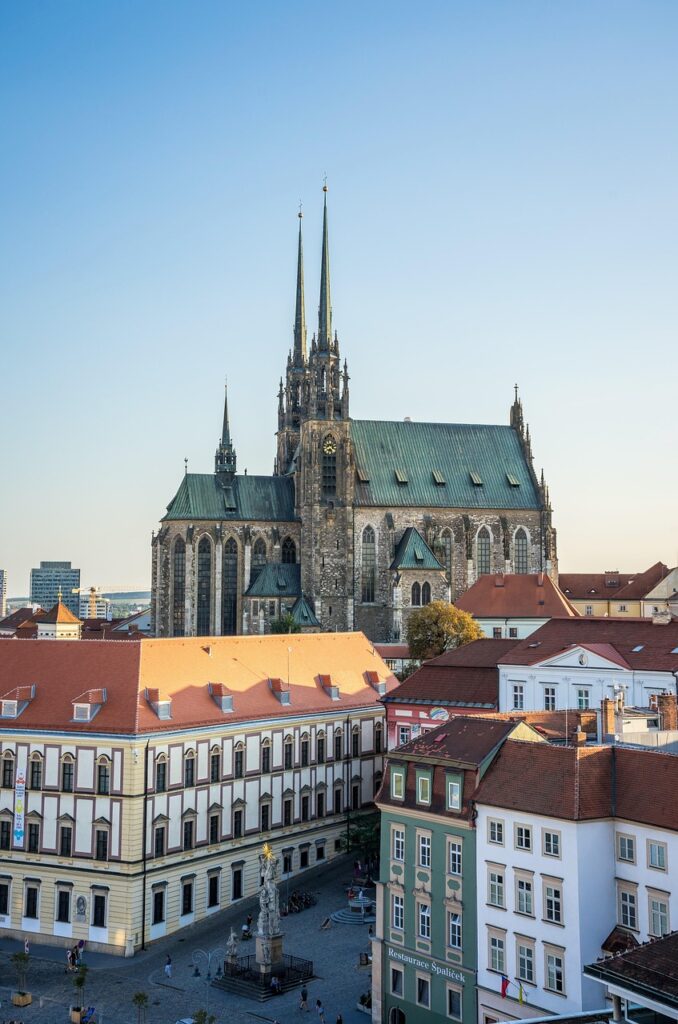
2. **Christopher Wren’s Wild Theory: Was Gothic Architecture Actually ‘Saracen’?**Just when you thought the origin story of ‘Gothic’ couldn’t get any weirder, along comes Sir Christopher Wren, the celebrated English architect responsible for rebuilding much of London after the Great Fire. Wren, despite his eventual distaste for the style, had a truly radical theory about its genesis. He looked at the pointed arch, a defining element of Gothic, and saw a connection not to Western Europe, but to the Islamic world. He called it the “Saracen style” and believed Europeans borrowed it from them.
In his “Report on St Paul’s,” Wren penned, “This we now call the Gothic manner of architecture (so the Italians called what was not after the Roman style) though the Goths were rather destroyers than builders; I think it should with more reason be called the Saracen style, for these people wanted neither arts nor learning: and after we in the west lost both, we borrowed again from them, out of their Arabic books, what they with great diligence had translated from the Greeks.” This was a pretty bold claim for the 17th century!
Wren was not alone in disliking the Gothic style, as he often expressed his “distaste for the Gothic style” in his letters. However, what sets him apart is his refusal to blame the Saracens for a perceived lack of ingenuity. Quite the contrary, he “praised the Saracens for their ‘superior’ vaulting techniques and their widespread use of the pointed arch.” He believed that Crusaders, during their “Holy War” starting in 1095, had seen “the Saracen Works, which were afterwards by them imitated in the West.”
While Wren’s theory about the Crusades providing the direct inspiration faces “chronological issues” (pointed arches appeared in Europe before the First Crusade), the idea that the style “most likely filtered into Europe in other ways, for example through Spain or Sicily” is still discussed. “Spanish architecture influenced by the Moors could have favoured the emergence of the Gothic style long before the Crusades took place,” possibly through “merchants, travelers and pilgrims.” It’s a testament to architectural cross-pollination and a reminder that history is rarely a straight line.
This ‘lost item’ highlights a historical debate about the true roots of a style. It challenges the notion of isolated development and points to a more interconnected medieval world than often assumed. Wren, despite his personal preferences, saw that Gothic was a “legitimate architectural style in its own right,” deserving of serious consideration, even if he attributed its origins to a different culture than most.
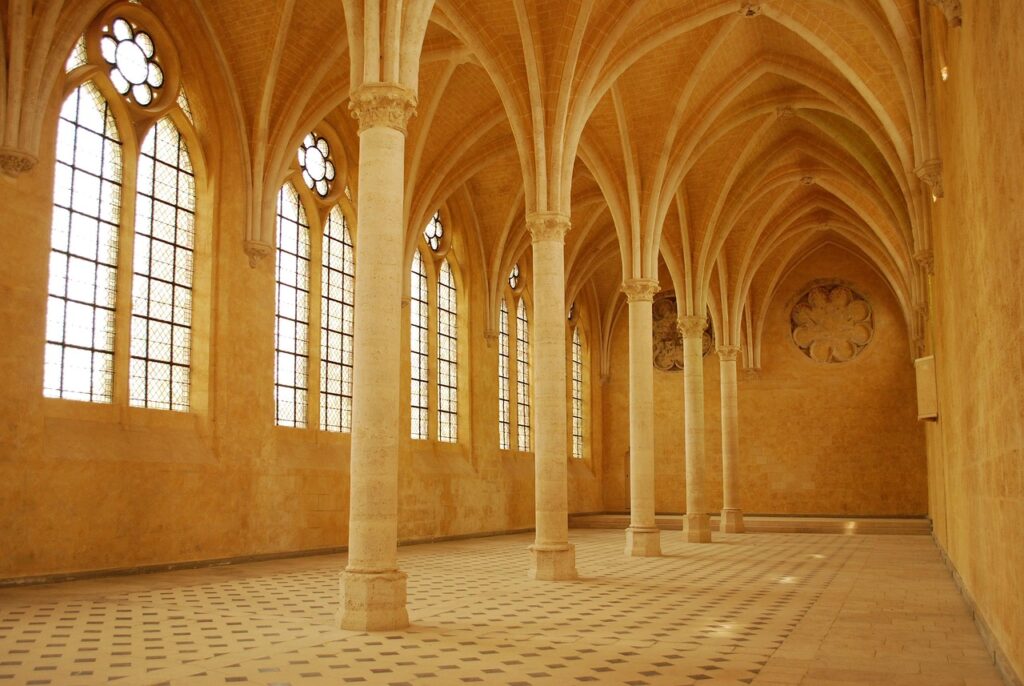
3. **The Great Contradiction: Why Goths, The ‘Destroyers’, Got the Credit**Here’s a historical head-scratcher: The Goths were an East Germanic people primarily known for their role in the fall of the Western Roman Empire. They were often depicted as destructive barbarians, hence Vasari’s derogatory use of their name for a new architectural style. So, how did their name become indelibly linked to some of Europe’s most refined and breathtaking architectural masterpieces? It’s a classic case of mistaken identity, or perhaps, lasting prejudice.
As Vasari explained, he attributed various architectural features to the Goths because he held them “responsible for destroying the ancient buildings after they conquered Rome, and for erecting new ones in this style.” The irony here is profound. The sophisticated, sky-reaching structures we admire today as Gothic were, in their nascent period, seen as crude and “barbarous” by those who championed the revival of classical Roman forms. This perspective essentially conflated innovation with destruction.
Sir Christopher Wren also weighed in on this, stating that “the Goths were rather destroyers than builders.” Both historical figures, despite their differences in theories about the style’s origin, agreed on the Goths’ reputation. This deep-seated perception meant that any architecture that broke from the classical mold, particularly the “pointed styles of ecclesiastical architecture” that differed “radically from the rounded arches prevalent in late antiquity,” was lumped under this pejorative label.
It was truly a “strange misapplication of the term,” as a 19th-century correspondent in the London journal Notes and Queries pointed out. The elegant pointed arch and the light, soaring structures of the later Middle Ages bore little resemblance to the robust, rounded arches of the Ostrogothic Kingdom or the earlier Romanesque styles. Yet, the name stuck, a persistent echo of Renaissance disdain. This ‘lost item’ underscores how powerful historical narratives and cultural biases can be in shaping our understanding and naming of art and architecture, regardless of factual accuracy.
4. **Vaulting to Fame: The Rib Vault’s Unsung Early Debut**When we think of Gothic architecture, those dramatically soaring, intricately ribbed ceilings are often one of the first images that come to mind. The rib vault is a hallmark of the style, allowing for greater structural integrity, lighter walls, and astonishing heights. What’s truly ‘weird,’ though, is just how early this game-changing innovation actually appeared, long before the formal birth of what we now recognize as Gothic.
While the systematic combination of rib vaulting, buttresses, and pointed arches defines the fully Gothic style, the individual element of the rib vault was already making an impact in the 11th century. The context states that “Gothic features, such as the rib vault, had appeared in England, Sicily and Normandy in the 11th century.” This pushes the timeline back considerably further than many might expect, revealing a period of fascinating experimentation and development.
One of the most notable early examples is Durham Cathedral in England, where “Rib-vaults were employed in some parts of the cathedral… between 1093 and 1104.” Another significant, though lesser-known, instance is Lessay Abbey in Normandy, where rib vaults were used in 1098. These early applications demonstrate a nascent understanding of the structural advantages these vaults offered, even if they weren’t yet part of a fully cohesive Gothic system.
These pioneering efforts provided a crucial foundation for the later, more extensive development of Gothic architecture in the 12th century. They allowed builders to begin envisioning spaces with fewer internal supports, larger windows, and a greater sense of openness. This ‘lost item’ reminds us that major architectural revolutions don’t just appear overnight; they often evolve from earlier, sometimes overlooked, innovations that slowly gain traction and influence. The rib vault was a quiet superstar long before it hit the big stage of Gothic cathedrals.
5. **Abbot Suger’s Dazzling Dream: Engineering ‘Uninterrupted Light’**If Gothic architecture has a spiritual godfather, it might just be Abbot Suger, the visionary who oversaw the reconstruction of the Abbey of Saint-Denis near Paris between 1140 and 1144. Suger wasn’t just building a church; he was chasing a theological and aesthetic ideal: a space flooded with divine light. This quest for “uninterrupted light” was a radical departure from the heavier, more enclosed Romanesque churches that preceded it, and it fundamentally shaped the Gothic style.
Suger’s ambition was to create an ambulatory – the walkway around the altar – and chapels that would be entirely suffused with light. He achieved this by systematically combining “developing Gothic architectural features” for the first time. He utilized the rib vault to remove solid walls and open up vast spaces for windows. He famously described his new ambulatory as “a circular ring of chapels, by virtue of which the whole church would shine with the wonderful and uninterrupted light of most luminous windows, pervading the interior beauty.”
To complement this revolutionary light-filled design, Suger also introduced “columns with capitals of carved vegetal designs, modelled upon the classical columns he had seen in Rome.” This shows a blend of influences and a conscious effort to elevate the aesthetic quality of the interior. Furthermore, he installed a circular rose window over the portal on the façade, a feature that would become a “common feature of Gothic cathedrals.”
Suger’s work at Saint-Denis was a pivotal moment, emphasizing “verticality and the effect created by the transmission of light through stained glass windows.” This ‘lost item’ highlights the philosophical and spiritual drive behind Gothic innovation. It wasn’t just about structural prowess; it was about creating an ethereal experience, a physical manifestation of divine presence through luminosity. Abbot Suger’s dream literally brightened the future of architecture.
6. **The Secret Weapon: How Flying Buttresses Changed Everything**Ever looked at a magnificent Gothic cathedral and wondered how its impossibly tall, thin walls managed to stand? The answer lies in one of architecture’s most ingenious ‘secret weapons’: the flying buttress. This structural innovation was a true game-changer, allowing builders to push the boundaries of height and light in ways that were previously unimaginable. Without them, the grand visions of Gothic architects might have remained just that – dreams.
Early Gothic cathedrals like Notre-Dame de Paris, begun in 1160, were at the forefront of this innovation. The text explains that the “builders of Notre-Dame went further by introducing the flying buttress, heavy columns of support outside the walls connected by arches to the upper walls.” This was a crucial development because these external supports weren’t just decorative; they were functional powerhouses.
What did they do? They “counterbalanced the outward thrust from the rib vaults.” Imagine the immense pressure exerted by those soaring stone ceilings; without the buttresses, the walls would simply splay outwards and collapse. By transferring this lateral thrust to external piers, the flying buttresses freed up the interior walls from having to bear the full burden, making them thinner and allowing for vastly larger windows.
In the decades following the initial innovations, “flying buttresses began to be used” more widely, becoming more sophisticated and enabling “the construction of lighter, higher walls.” This ‘lost item’ is less about being ‘lost’ and more about being a truly revolutionary, yet often externally overlooked, piece of engineering. The flying buttress is the unsung hero that allowed Gothic cathedrals to reach for the heavens, transforming them from heavy fortresses into luminous, gravity-defying spectacles. It was an engineering superstar, quietly doing the heavy lifting.
7. **The Sky’s the Limit (Until It Wasn’t!): High Gothic’s Perilous Pursuit of Height**After Abbot Suger’s light-filled revolution and the ingenious flying buttresses, architects were practically screaming, “How high can we go?!” The High Gothic period (c. 1194–1250) was a brief, intense era of architectural adrenaline, with cathedrals literally competing to touch the clouds. Talk about a vertical arms race!
This period birthed iconic landmarks, starting with Chartres Cathedral, south of Paris. Rebuilt after a 1194 fire, Chartres set the new standard. Builders smartly simplified earlier designs, eliminating tribune galleries, and expertly using flying buttresses to support those soaring upper walls. The stunning result? Walls virtually made of stained glass, narrating biblical tales and even proudly displaying the crafts of sponsoring guilds.
Chartres’ model quickly became the blueprint for a wave of new, taller cathedrals, including Reims, Amiens, and Bourges. Even Central Europe caught the height fever, with High Gothic appearing in places like Toul and Marburg, showcasing this widespread ambition.
The thirst for height was real. Chartres hit an impressive 38 meters (125 ft). Then Beauvais Cathedral pushed it further to a dizzying 48 meters (157 ft). This was the ultimate height challenge! Sadly, the ambitious structure collapsed in 1248, a stark reminder of medieval engineering limits. After that, architects wisely hit the brakes on the height competition.
With the ceiling quite literally reached, attention pivotally shifted from sheer verticality to something equally awe-inspiring: dazzling decoration. This architectural plot twist steered Gothic’s evolution toward intricate beauty rather than just raw height, setting the stage for its next exciting chapter.

8. **From Soaring Heights to Dazzling Details: The Rise of Rayonnant and Flamboyant**Once the height race culminated, Gothic architects pivoted their energy to dazzling light and intricate design. This birthed the Rayonnant Gothic style (c. 1240–1350), aiming to maximize stained glass until walls virtually vanished, creating ethereal, glowing structures. Imagine entering a kaleidoscope!
The nave of Saint-Denis (from 1231) and Louis IX’s Sainte-Chapelle (1241–1248) exemplify this luminous revolution. High, thin walls, enabled by flying buttresses, became vast canvases for glass and iron-reinforced tracery. Louis IX’s monumental rose windows for Notre-Dame de Paris in the 1250s solidified Rayonnant’s “first international style” across Europe, reaching Metz, Cologne, and Strasbourg.
Masons became light and stone artists, crafting astonishing tracery patterns beyond simple lancet windows, evolving into complex geometrical, reticulated, and curvilinear forms. These sophisticated bar-tracery patterns define the “Second Pointed style,” a testament to their refined craftsmanship.
Across the Channel, England developed its “Decorated Gothic.” While sharing Rayonnant’s window focus, it excelled in tracery ornamentation. Think the intricate details at Westminster Abbey, or the stunning cathedrals at Lichfield and Exeter – true architectural bling!
As the 14th century progressed, Rayonnant’s “second international style” emerged with sharper tracery mouldings, seen in Clermont-Ferrand and Strasbourg Cathedral’s façade. This decorative fever reached its peak in the Late Gothic (c. 1350–1500) with the “Flamboyant” style. Central Europe, led by Prague Cathedral (from 1344) under Peter Parler, pioneered rich, varied tracery and intricate rib-vaulting, so magnificent that even parish churches rivaled cathedrals. A maximalist’s dream indeed!

9. **England’s Exclusive Club: The Insular World of Perpendicular Gothic**While continental Europe embraced the fiery Flamboyant designs, England, ever the architectural individualist, carved its own path. From the 1320s, the ornate Decorated Gothic yielded to a unique style: Perpendicular Gothic. It was a dramatic shift towards straightened, orthogonal tracery and the emergence of breathtaking fan-vaulting.
What makes Perpendicular Gothic truly stand out in our ‘lost luggage’ findings is its sheer exclusivity. This style was “unknown in continental Europe,” and remarkably, had “no equivalent in Scotland or Ireland.” It was a truly insular development, a distinctly English idiom that flourished for centuries. Imagine a secret architectural society, creating wonders unlike anything else!
Its debut was subtle, first appearing in the cloisters and chapter-house of Old St Paul’s Cathedral in London around 1332 by William de Ramsey. Early examples, like Gloucester Cathedral’s chancel (c. 1337–1357) and its 14th-century cloisters, showcased this new rectilinear elegance.
A signature move was the frequent use of four-centred arches, lending structures a broader feel. But the real showstopper was the evolution of lierne vaults into spectacular fan vaults. These marvels first graced Hereford Cathedral’s chapter-house and Gloucester’s cloisters, then reached their zenith in King’s College Chapel, Cambridge (1446–1461), and the Henry VII Chapel at Westminster Abbey (1503–1512).
Sometimes called the “Third Pointed” style, Perpendicular Gothic enjoyed an incredibly long run, employed over three centuries. Structures like the fan-vaulted staircase at Christ Church, Oxford, built around 1640, are masterclasses in late Gothic innovation! This singular development cemented Perpendicular Gothic as a truly distinct ‘item,’ a testament to England’s unique medieval design contribution.

10. **Architectural Mashups: When Gothic Met Renaissance (and It Was Awesome!)**The mid-15th century brought a seismic shift: the Renaissance was here! Gothic, never truly popular in Italy, gradually lost its European stronghold. Italians, inspired by Roman ruins, returned to classical models, deeming Gothic “outdated, ugly and even barbaric.” Ouch!
Yet, Gothic didn’t vanish. Filippo Brunelleschi’s iconic Florence Cathedral dome (1420–1436), a Renaissance landmark, cleverly used “Gothic technology” with its 24-rib framework. A powerful early hybrid, blending old and new!
As Renaissance architecture blossomed in 16th-century France and elsewhere, the cultural clash was clear. Critics like Vasari and Molière solidified Gothic’s “ignorant age” perception. French kings, impressed by Italian styles, brought back artists and craftsmen, leading to structures like the Chateau of Gaillon and Château de Blois, proudly showcasing Renaissance features.
Amidst this classical fervor, new Gothic churches *still* rose. Paris saw Saint-Merri (1520–1552) and Saint-Germain l’Auxerrois built in the Gothic manner, with Parisian classicism only appearing around 1540.
The ultimate architectural mashup was Paris’s Saint-Eustache, begun 1532. This colossal church, rivaling Notre-Dame, started Gothic. But as construction stretched into the 1560s, Renaissance elements like classical column orders were boldly integrated. The result? A fascinating “Gothic-Renaissance hybrid,” a visible testament to a world caught between architectural titans. Similar blends appeared in Germany and Spain, proving some tastes truly combine brilliantly!
11. **The Last Stand: Gothic Architecture’s Remarkable Survival in Isolated Pockets**Despite the Renaissance declaring Gothic “outdated” and “passé,” this architectural style refused to vanish. Like a resilient, underground movement, Gothic “continued to be employed until the 17th and 18th centuries,” particularly thriving in “provincial and ecclesiastical contexts, notably at Oxford.” It’s a testament to its enduring appeal that it simply wouldn’t disappear.
Even in Paris, birthplace of Gothic, churches like Saint-Merri (1520–1552) and Saint-Germain l’Auxerrois continued rising in the traditional Gothic manner. And Saint-Eustache, that magnificent hybrid started in 1532, maintained its Gothic foundational structure and soaring scale, persisting into an age that largely rejected it.
Beyond the courts, Germany saw fascinating fusions. Augsburg’s Fugger Chapel (1510–1512) combined Renaissance elements with robust Gothic vaults. Similarly, Munich’s Church of St. Michael layered Renaissance decorations onto a core Gothic framework – pragmatic, sometimes beautiful, continuation.
Perhaps the most striking survival examples are in isolated regions. Ireland, unexpectedly, became an “island of Gothic architecture” into the 17th and 18th centuries. Cathedrals like Derry (completed 1633), Sligo (c. 1730), and Down (1790–1818) stand as pure Gothic proof, built when Baroque and Neoclassical dominated elsewhere. It’s like finding a vintage band still rocking out!
And then there’s Oxford. The 17th and 18th centuries saw “several important Gothic buildings constructed at Oxford University and Cambridge University,” including the iconic Tom Tower at Christ Church (1681–1682). Its architect? Christopher Wren, who famously disliked Gothic! Even his aversion couldn’t stop the style’s demand within those venerable walls. This ‘lost item’ shows a style too good, too functional, or too beloved to ever truly disappear.
12. **Back From the Brink: The Grand Revival of Gothic in the 18th and 19th Centuries**After centuries of being dismissed as “barbarous,” Gothic architecture staged the ultimate comeback! Surviving in quiet corners, it didn’t just linger; it exploded onto the scene in a spectacular “revival from the late 18th century and throughout the 19th.” This wasn’t just nostalgia; it was a full-blown architectural renaissance, making Gothic cool again!
England pioneered this revival, with its Perpendicular style resurging in the 18th century. Fuelled by the Oxford Movement and Anglo-Catholic ideals, Neo-Gothic became the preferred style for churches, civic buildings, and institutions. After 1837, it was known as Victorian Gothic, gaining wide appeal and blossoming into “High Victorian Gothic” (1855-1885).
The revival’s scale was mind-blowing. London’s iconic Palace of Westminster, designed by Sir Charles Barry with Augustus Welby Pugin’s interiors, is a prime example. Other monumental works include George Gilbert Scott’s Albert Memorial and William Butterfield’s Keble College chapel. Gothic wasn’t confined to cathedrals; it appeared in non-ecclesiastical buildings, even philanthropic working-class housing.
The mid-19th century saw massive restoration and new neo-Gothic constructions. Cologne Cathedral’s nave was finally completed in the Gothic style, alongside new masterpieces like Paris’s Sainte-Clotilde. Globally, the Gothic Revival reached superstar status, giving us landmarks like London’s St Pancras railway station, New York’s Trinity Church, and the majestic St Patrick’s Cathedral.
This grand resurgence spanned the globe! Anglican St John’s Cathedral in Hong Kong stands as testament. From Horace Walpole’s whimsical Strawberry Hill House, which kicked it off, to the Elizabeth Tower (Big Ben), the Hungarian Parliament, and Palazzo del Governatore in Rhodes, Gothic proved its universal appeal. Nicholas Hawksmoor’s Westminster Abbey towers (1722–1745) truly “opened a new period of Gothic Revival,” proving that sometimes, ‘lost luggage’ just needs a little dusting off to shine brighter than ever! What an incredible journey for a style once deemed barbaric!
So there you have it – a wild ride through the ‘lost luggage’ of Gothic architecture! From its surprisingly scandalous beginnings as a pejorative insult to its jaw-dropping revival as a global superstar, this style has defied expectations, pushed boundaries, and continuously reinvented itself. It’s a testament not just to ingenious engineering and artistic vision, but to the sheer human spirit of innovation and adaptation. These ‘weird items’ aren’t just historical footnotes; they’re vibrant chapters in a story that continues to inspire. So, next time you gaze upon a soaring cathedral or an intricately detailed facade, remember the hidden histories, the bold experiments, and the incredible journey of a style that truly reached for the heavens, both literally and figuratively. Now, go forth and impress your friends with these mind-blowing architectural insights!

